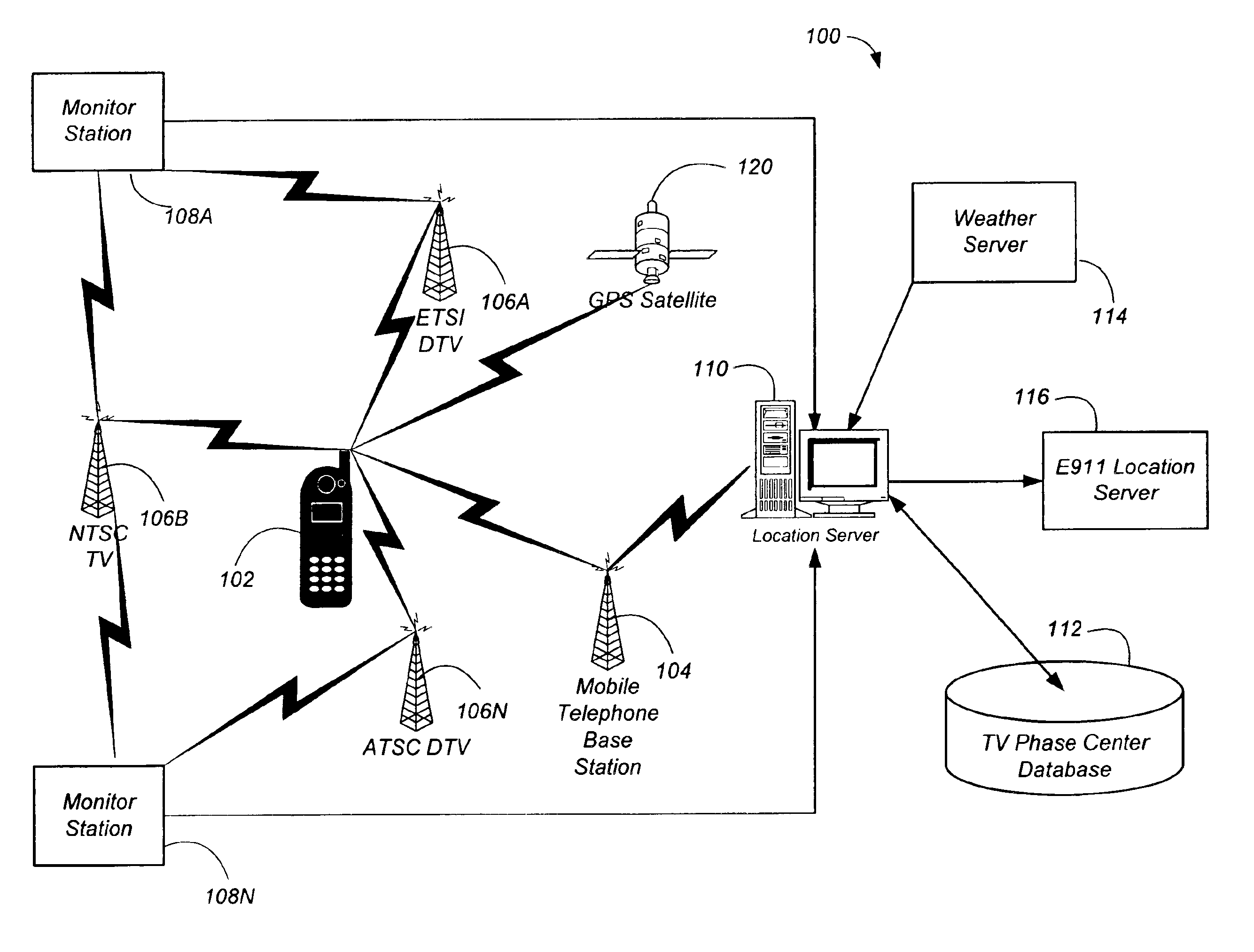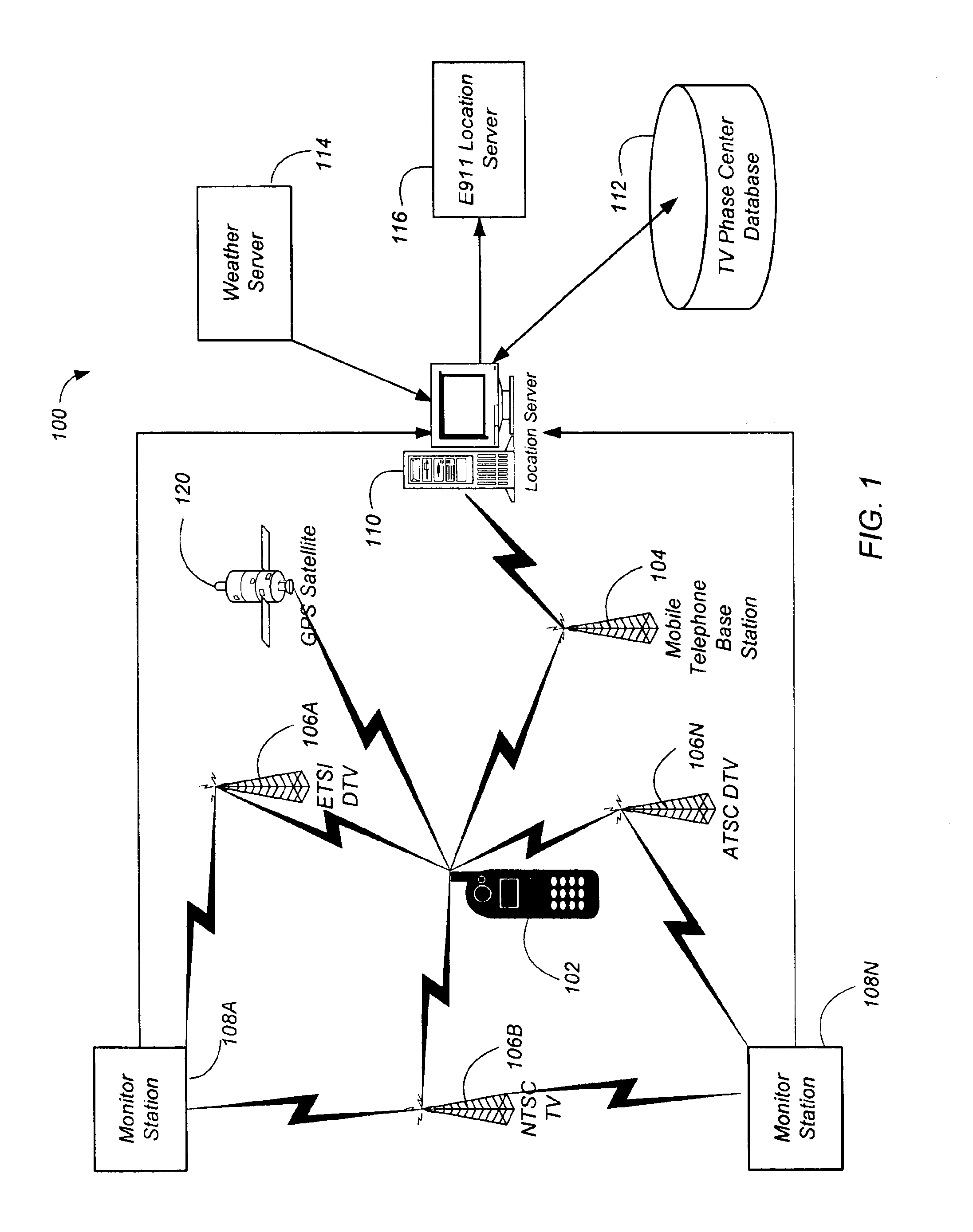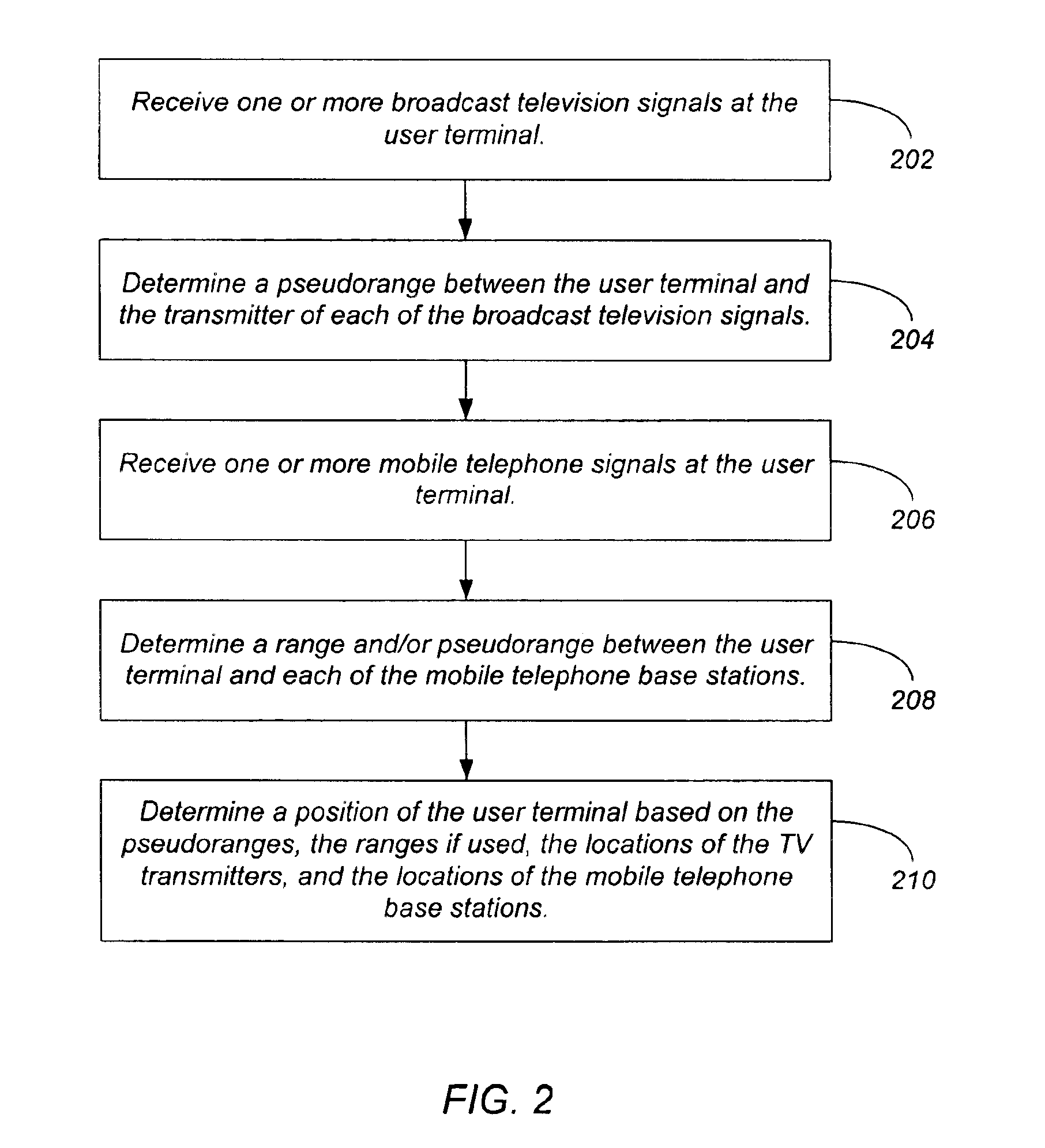Position location using broadcast television signals and mobile telephone signals
a technology of broadcast television and position determination, applied in direction finders using radio waves, selective content distribution, instruments, etc., can solve the problems of marginally useful signals, less effective gps, and no usefulness at all
- Summary
- Abstract
- Description
- Claims
- Application Information
AI Technical Summary
Benefits of technology
Problems solved by technology
Method used
Image
Examples
Embodiment Construction
Introduction
Broadcast television signals can be used to determine the position of a user terminal. Techniques for determining the position of a user terminal using the American Television Standards Committee (ATSC) digital television (DTV) signal are disclosed in commonly-owned copending U.S. Non-provisional patent application Ser. No. 09 / 887,158, “Position Location using Broadcast Digital Television Signals,” by James J. Spilker and Matthew Rabinowitz, filed Jun. 21, 2001, the disclosure thereof incorporated by reference herein in its entirety. Techniques for determining the position of a user terminal using the European Telecommunications Standards Institute (ETSI) Digital Video Broadcasting-Terrestrial (DVB-T) signal are disclosed in commonly-owned copending U.S. Non-provisional patent application Ser. No. 09 / 932,010, “Position Location using Terrestrial Digital Video Broadcast Television Signals,” by James J. Spilker and Matthew Rabinowitz, filed Aug. 17, 2001, the disclosure th...
PUM
 Login to View More
Login to View More Abstract
Description
Claims
Application Information
 Login to View More
Login to View More - R&D
- Intellectual Property
- Life Sciences
- Materials
- Tech Scout
- Unparalleled Data Quality
- Higher Quality Content
- 60% Fewer Hallucinations
Browse by: Latest US Patents, China's latest patents, Technical Efficacy Thesaurus, Application Domain, Technology Topic, Popular Technical Reports.
© 2025 PatSnap. All rights reserved.Legal|Privacy policy|Modern Slavery Act Transparency Statement|Sitemap|About US| Contact US: help@patsnap.com



